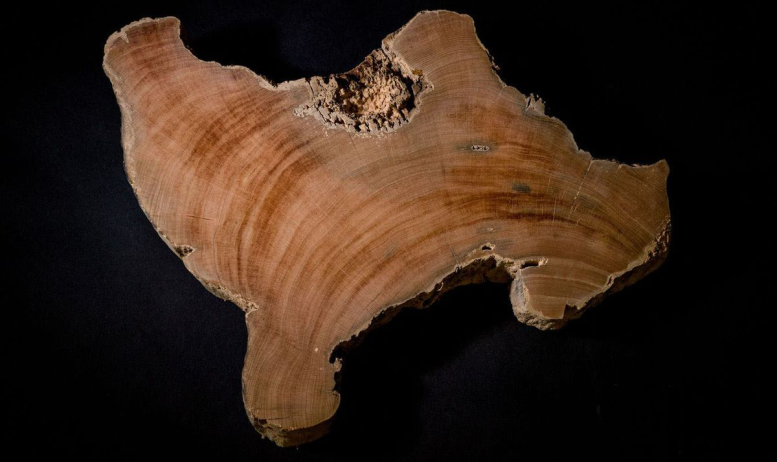Tree rings reveal ancient solar storms, helping scientists predict and prepare for future events that could disrupt satellites and technology.
A West Virginia University researcher suggests that severe space weather can leave traces in tree rings, offering valuable evidence that may help us prepare for future catastrophic events that could endanger communication satellites and astronauts.
Amy Hessl, professor of geography at the WVU Eberly College of Arts and Sciences, said there are many kinds of unpredictable space weather — including the geomagnetic storms that cause auroras near the poles — and ancient tree rings have revealed some rare and extreme events in the distant past.
“If one of these events were to happen today and you were on a high latitude flight flying to Norway, you’d probably receive your lifetime dose of radiation on the plane,” Hessl said. “And if you were in space, it potentially could kill you.”
Hessl recently earned more than $202,000 in funding from the National Science Foundation to further explore the topic.
Radiocarbon in Tree Rings and Miyake Events
Some events produce solar energetic particles that, through a cascade of reactions in the atmosphere, create radiocarbon. Since trees use carbon in the air to make wood, annual tree rings record a history of past solar activity, Hessl said. Long tree ring records, dating back centuries, have revealed evidence of unusually severe storms, known as “Miyake events,” characterized by rapid increases in the amount of radiocarbon in the atmosphere. The first Miyake events, which occurred in 774 AD and 993 AD, were discovered 12 years ago. Since that time, the research community has found seven more events in the last 14,000 years.

“Some of these events were really extreme and would be incredibly disruptive to our telecommunications system now,” Hessl said. “It’s a very rare event, but it’s not out of the question. We’re dependent on satellites and, if it did happen again, it would probably wipe out most of our telecommunications, taking 15 years to recover. It’s that powerful.”
Solar flares trigger most energetic particle events that hit Earth, but particles can also come from galactic cosmic rays outside the solar system, often started by explosions like supernovas. While most evidence points to the sun as the source of the Miyake events, Hessl said she hopes the tree ring records from locations around the world can help the scientific community pinpoint the causes and determine how severe those events were.
Challenges in Interpreting Tree Ring Data
The problem is the data recorded in tree rings may not be as straightforward as researchers once believed.
“Until recently, scientists have assumed that trees take up radiocarbon evenly,” Hessl said. “We’ve been treating trees as if they’re scientific instruments. But they’re not. They’re potentially very biased in the way they take up the radiocarbon. So we’ve been studying why different species of trees or trees at separate locations don’t take up radiocarbon the same way. Then when you look at the data, you have a better understanding of how reliable this recorder is.”
Evidence from Miyake events also suggests some trees are storing carbon they’ll allocate later — making them less reliable recorders of atmospheric chemistry. To understand why, Hessl and her collaborators — Maria Carbone from Northern Arizona University and Rachael Filwett from Montana State — are studying how consistent different trees are at recording atmospheric radiocarbon on an annual scale. They found three locations in the U.S. where wood dates to at least one of the last three major Miyake events and where they can study the physiology of those same species in living trees.
Studying Different Tree Species
“We’re looking at three species that have very different physiological strategies for wood production,” Hessl said. “An evergreen conifer from Utah, the bristlecone pine, is the longest-lived tree species in the world. They live for several thousand years and they’re the backbone of what we know about past radiocarbon in the atmosphere. That’s how we know what the levels were like going back in time, and they’ve been the most studied.”
The team will be able to compare bristlecone pines from Utah with the deciduous bald cypress in North Carolina and oak trees preserved in Missouri riverbeds. After taking a core sample the size of a pencil — or a cross-section if the tree is dead — they’ll date each ring to the year using cross dating, an independent dating technique that allows scientists to confirm the year each ring formed. Any tree that was alive during one of the Miyake events would record those events in the chemistry of the rings. But Hessl said she expects that not all trees will do so in the same way.
“We’re trying to define how extreme those events were,” Hessl said. “When did they occur, exactly? How long did the radiocarbon last in the atmosphere? We need to be sure we’re using reliable recorders, so that’s what we’re trying to figure out. How reliable are these trees at recording radiocarbon levels in the atmosphere, really?”
By studying the way different trees record past events and how they are taking up radiocarbon today, Hessl said she hopes to better understand how to prepare for future events, including those intense enough to threaten technological infrastructure. Though she said a Miyake event is extreme and unlikely, the key is advanced preparation.
“Some stuff gets a little overblown, but we saw what happened during the pandemic in terms of initial panic. So it’s very reasonable to try and figure out what the upper-end bookmark of these things are, and then communicate that to the IT community so our technologies can be protected.”
The research was funded by the U.S. National Science Foundation.
This post was originally published on here







